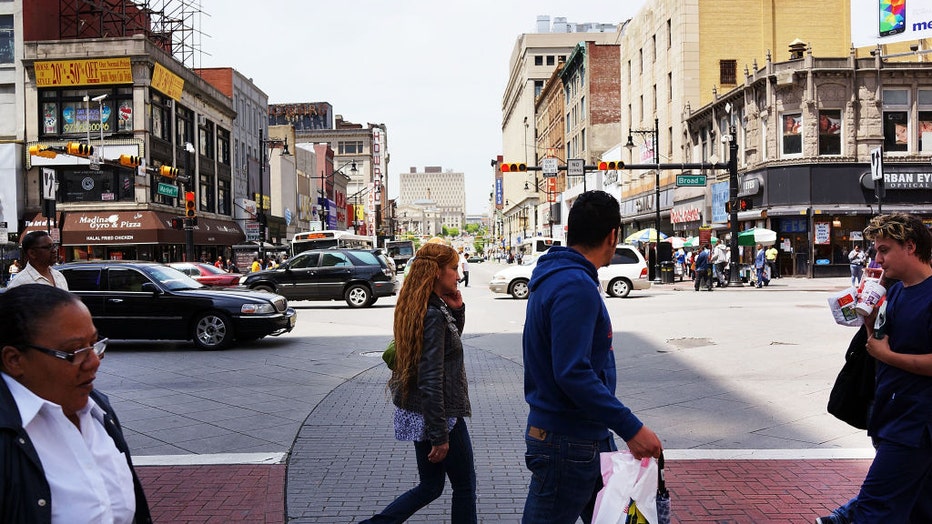America's downtown areas slowly springing back to life, research on cell phone activity shows

According to research from the University of Toronto, downtown Columbus, Ohio, saw a 109% recovery rate; indicating it may be busier at present than it was before COVID-19. (Jumping Rocks/Universal Images Group via Getty Images)
In a handful of U.S. cities, downtown activity may have returned to pre-pandemic levels according to one study.
The study from the University of Toronto’s School of Cities examined 62 North American downtown areas, tracking areas in North America; tracking recovery rates using cell phone data. Researchers compared the most recent activity to pre-pandemic levels in 2019.
The findings revealed that most downtown that have bounced back were in the southern part of the U.S. – while northern cities continue to struggle.
SAN FRANCISCO 'DOOM LOOP' THREATENS TO GUT DOWNTOWN ECONOMY AS EMPLOYEES WORK FROM HOME
The study also determined that mid-sized cities had seen higher rates of recovery than larger ones, partly because small and mid-size cities saw an influx of new residents during the pandemic.
"These are some of the cities that are growing fastest in population right now in the United States, so they’re benefiting as people leave the larger coastal cities," said Karen Chapple, director of the School of Cities at the University of Toronto.

The downtown neighborhoods of mid-sized cities are coming back faster than those of big cities according to a University of Toronto study. (Spencer Platt/Getty Images)
A number of mid-sized cities even record recovery rates of more than 100%; indicating their downtown areas could be even more active now, than before 2019.
NEW YORK CITY HAS LOST NEARLY HALF A MILLION RESIDENTS SINCE START OF COVID PANDEMIC
"These are some of the cities that are growing fastest in population right now in the United States, so they’re benefiting as people leave the larger coastal cities," Chapple said.
In communities with high recovery rates, the study identified lower commute times and diverse economies as primary factors for success.
"They [these cities] put a lot of the government buildings downtown, they put a lot of their healthcare down, and those are the folk that came back," said Chapple.
The findings of the study revealed a wide array of projected recovery, with cities like San Francisco, seeing only a 31% rebound while cities like Salt Lake City saw a 135% recovery rate. Bakersfield (119%), Fresno (115%), Columbus (109%), El Paso (106%) and also saw recovery rates exceeding 100%.
In Columbus, economic development officials say they’ve seen some recovery firsthand.
"It’s encouraging news, it’s great to see people coming back to the office, and coming downtown for entertainment and restaurants," said Kenny McDonald, CEO of the Columbus Partnership. "However, we’re going to have to change the way we do things if we’re going to be one of those cities that comes back not only as good but better than we were pre-pandemic."
About 140 miles north of Columbus, the city of Cleveland (44%) saw much a lower rate of recovery than of its southern neighbor.
In cities with lower recovery rates, Chapple explained the slow rebound could be the fault of a downtown’s reliance on professional or tech workers that are still engaged in remote work.
Get the latest updates on this story at FOXBusiness.com.

